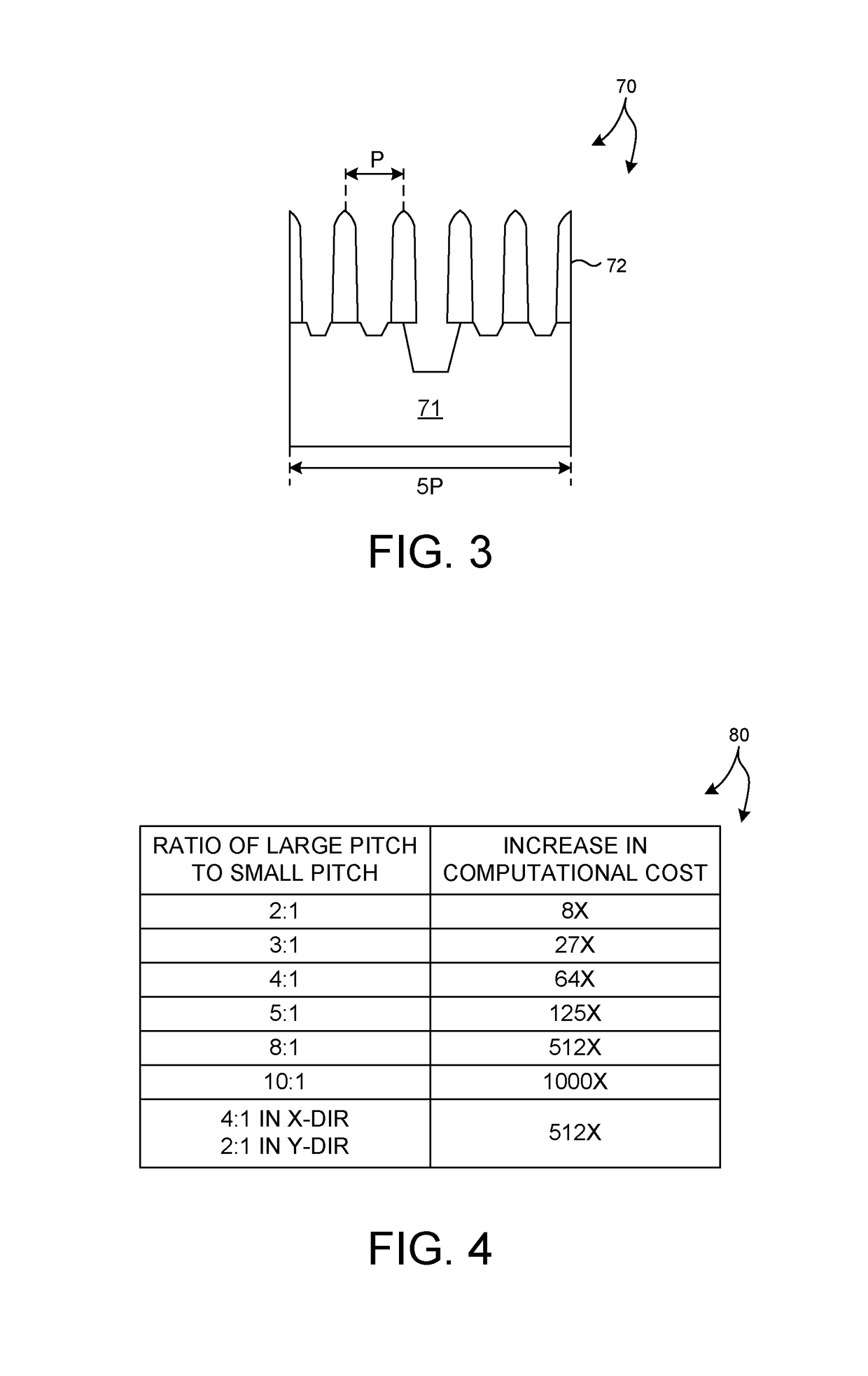Optimizing computational efficiency by multiple truncation of spatial harmonics
a technology of spatial harmonics and optimization, applied in the field of meteorological systems and methods, can solve the problems of more complex optical tools, more complex characterization tools, and more difficult characterization, and achieve the effects of reducing computational effort, improving computational efficiency of electromagnetic simulation algorithms based on truncated spatial harmonic series, and reducing memory requirements
- Summary
- Abstract
- Description
- Claims
- Application Information
AI Technical Summary
Benefits of technology
Problems solved by technology
Method used
Image
Examples
Embodiment Construction
[0049]Reference will now be made in detail to background examples and some embodiments of the invention, examples of which are illustrated in the accompanying drawings.
[0050]Methods and systems for solving measurement models of complex device structures with reduced computational effort are presented. More specifically, the computational efficiency of electro-magnetic (EM) simulation algorithms based on truncated spatial harmonic series is improved when the periodic target exhibits multiple periodicities. As described herein, a periodic target having multiple periods includes a fundamental spatial period, and one or more approximate periods that are integer fractions of the fundamental spatial period. Metrology systems employing these techniques are configured to measure process parameters and structural and material characteristics (e.g., material composition, dimensional characteristics of structures and films, etc.) associated with different semiconductor fabrication processes.
[0...
PUM
| Property | Measurement | Unit |
|---|---|---|
| wavelength range | aaaaa | aaaaa |
| electromagnetic simulator | aaaaa | aaaaa |
| dielectric permittivity | aaaaa | aaaaa |
Abstract
Description
Claims
Application Information
 Login to View More
Login to View More - R&D
- Intellectual Property
- Life Sciences
- Materials
- Tech Scout
- Unparalleled Data Quality
- Higher Quality Content
- 60% Fewer Hallucinations
Browse by: Latest US Patents, China's latest patents, Technical Efficacy Thesaurus, Application Domain, Technology Topic, Popular Technical Reports.
© 2025 PatSnap. All rights reserved.Legal|Privacy policy|Modern Slavery Act Transparency Statement|Sitemap|About US| Contact US: help@patsnap.com



